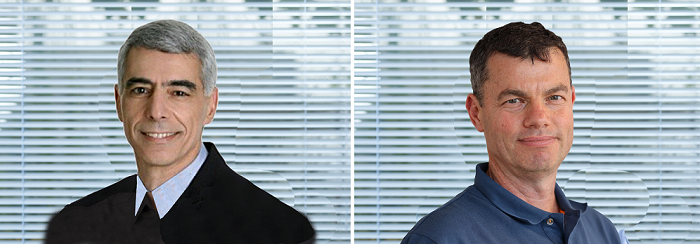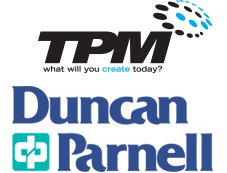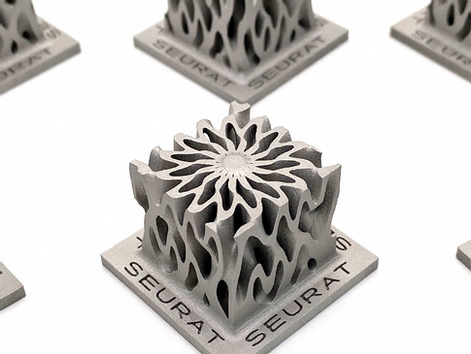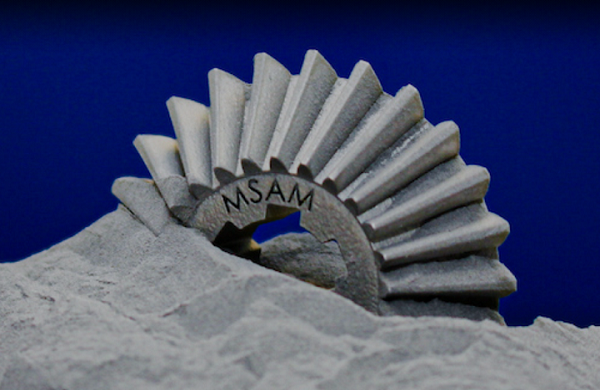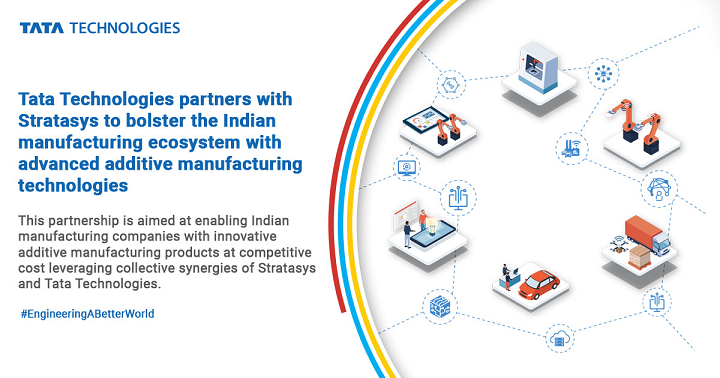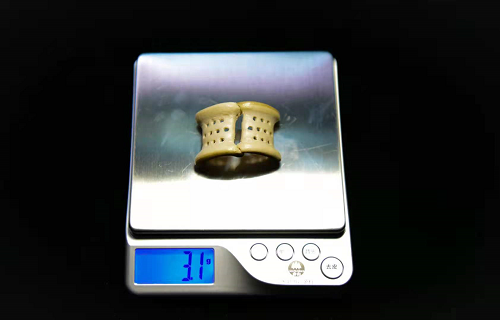3D Printing News Briefs, July 22, 2021: XJet, TPM & Duncan Parnell, Seurat, FedDev Ontario & University of Waterloo, Tata Technologies & Stratasys, US Marine Corps, Nexa3D, INTAMSYS, Shell, ORNL & Local Motors
We’re sharing plenty of business news with you today in this edition of 3D Printing News Briefs, starting with two new executive appointments at XJet and TPM’s acquisition of Duncan Parnell’s 3D printing division. Seurat has raised funds to develop its Area Printing metal AM technology, FedDev Ontario is investing in an AM consortium based in Waterloo, and Tata Technologies is working with Stratasys to advance the technology in India. Moving on, the Marine Corps is working on a way to easily access 3D printing plans from anywhere, Nexa3D’s xWASH is now available, and an INTAMSYS 3D printer was used to make PEEK medical implants. Finally, Shell is 3D printing industrial spare parts, and ORNL is using wireless technology to charge the 3D printed autonomous Olli shuttle.
XJet Announces Executive Chairman, Management Hires
Metal and ceramics 3D printing provider XJet announced a few new hires recently, appointing Avi Cohen as Executive Chairman of the Board and Aviv Boim as the company’s Chief Financial Officer. Cohen has plenty of C-level and board member experience in the semiconductor and capital equipment market, and already sits on several boards, including Nova and Cortica, while Boim, with a background in banking, has worked in the healthcare, network security, and telecommunications industries in his previous executive and financial positions. Additionally, XJet appointed Gal Raz as its Business Development Director, due to his experience and knowledge in the AM market, specifically managing several 3D printing service bureaus. These appointments will support XJet during its return to normalcy after a year focusing on R&D efforts during the pandemic.
Hanan Gothait, CEO and Founder of XJet, stated, “XJet continues to attract some of the best talent in the industry, and I look forward to working with the team and seeing the results as XJet continues its growth in ceramic and metal additive manufacturing.”
TPM Acquires Duncan Parnell’s 3D Printing Division
South Carolina-based technology solutions provider TPM, Inc. is going through a strategic expansion, and announced that it has acquired a 3D printing-focused division of Duncan Parnell, Inc., one of the Southeast’s top distributors of technology, services, and products to architects, construction contractors, designers, engineers, and surveyors. TPM, which includes AM technology from Markforged and HP in its portfolio, gains additional personnel, customers, and 3D printing solutions as a result of this acquisition, which will help the company in its goal to advance 3D printing across the Southeastern region of the US. The acquisition will also allow TPM to add 3D Systems’ technology to its portfolio.
“Duncan-Parnell is both proud and grateful for the relationships we have formed in the Additive and 3D Printing industry. I am confident that TPM will continue to foster those relationships with our customers and provide them with a high level of service and support,” said Mark Duncan, President of Duncan Parnell, Inc. “TPM is dedicated to being a leader focused on the Additive space, and as this industry evolves, that will be crucial to our customers going forward.”
Seurat Raises $41M in Series B Funding
Area Printing metal additive technology by Seurat Technologies, a Massachusetts company named after the French post-impressionist painter, focuses over two million controllable points of laser light on a metal powder bed to print functional, production-grade components. Seurat says the technology has major potential for scalability, and recently closed a $41 million round of Series B funding, led by Capricorn’s Technology Impact Fund, that will be used to further develop and commercialize its Area Printing. Mobility supplier Denso, in addition to previous supporters True Ventures, GM Ventures, Porsche Automobil Holding, Siemens Energy, and Maniv Mobility, also contributed to the Series B round, which will help Seurat target manufacturing costs below conventional die casting processes with its Area Printing by 2030.
“We are bringing to market a completely revolutionary technology. Think evolving from writing a letter to the advent of the printing press, but with lasers printing metal parts,” explained James DeMuth, Seurat’s CEO and Co-Founder. “Bringing on new financial and strategic investors at the caliber of Capricorn will greatly aid Seurat in taking the big next step forward towards commercialization.”
FedDev Ontario Invests in AM Consortium
Since 2015, FedDev Ontario has invested over $170 million in more than 150 projects in the Waterloo Census Division, the most recent of which is an $8.2 million investment for the University of Waterloo to build on the foundation of its Multi-Scale Additive Manufacturing (MSAM) Lab and set up an Additive Manufacturing Alliance (AMA). The MSAM is Canada’s most comprehensive academic R&D facility for metal 3D printing, and offers companies a space to try out new technologies and products while also advancing them through research. The new AMA, which is a consortium between post-secondary institutions and major industry partners, will help businesses across southern Ontario get past barriers to advanced manufacturing adoption. This project will support more than 90 businesses in their efforts to commercialize close to 30 advanced manufacturing technologies, expand the MSAM’s reach beyond the Greater Toronto Area and Kitchener-Waterloo, provide training and outreach for roughly 1,500 students, research associates, and industry personnel, and create and maintain over 275 jobs.
“This funding is instrumental in capitalizing on an unprecedented interest in additive manufacturing tech adoption in Canada,” said Mihaela Vlasea, Assistant Professor of Mechanical and Mechatronics Engineering at the University of Waterloo. “It will be used to scale up research and development activities and move them into more mature stages of the product development cycle and stimulate technology transfer to achieve tangible economic benefits for SME partners.”
Tata Technologies & Stratasys Partner Up
Tata Technologies, a global engineering and product development digital services company, announced that it was partnering with Stratasys in order to bring advanced 3D printing technologies to the manufacturing sector in India. As more advanced manufacturing companies continue looking for ways to be more competitive and offer high quality designs at less cost, in addition to helping address the weak spots in supply chain logistics, 3D printing is looking better and better. Through this new partnership, capabilities and offerings from Stratasys will be combined with Tata Technologies’ manufacturing expertise and strong presence in India, in order to offer end-to-end AM solutions to India-based manufacturing companies.
“Our partnership with Tata Technologies further strengthens Stratasys’ commitment to driving additive manufacturing adoption in the Indian industry,” said Rajiv Bajaj, Managing Director of Stratasys India and South East Asia. “We welcome Tata Technologies, one of the most trusted brands in India, to our ecosystem and are confident that this partnership will accelerate technological transformation in Indian industry and academia with best-in-class Stratasys technology.”
US Marine Corps Wants Secure, Digital 3D File Repository

Cpl. Aiden Bemis, a digital manufacturing engineer with 1st Supply Battalion, 1st Marine Logistics Group, I Marine Expeditionary Force, looks at the prototype of a steering wheel remover tool at Marine Corps Base Camp Pendleton, April 29, 2021. US Marine Corps Photo
During a virtual session at the recent WEST 2021 conference, cohosted by the US Naval Institute and AFCEA, Marine Corps Systems Command officials made it known that they want to set up a secure, detailed, digital repository for access to plans and files for 3D printed spare parts from anywhere in the world. The long-term goal is a repository called the Digital Manufacturing Data Vault, or DMDV, which is essentially a “one-stop-shop” across the Marine Corps, sister services, and the Defense Logistics Agency, for approval process, approved part drawings, version control, and technical data packages—basically all of the shared engineering data for printing the spare parts. The DMDV will also act as a lifecycle management tool for program offices, and will support innovation, as well as collaboration with the services, DLA, and allies. According to SYSCOM, there is already an existing repository of more than 400 parts, but the DMDV seems like it will be much more extensive, and the plan is to implement it during fiscal year 2024.
“We’re working toward a centralized digital repository the program offices will use to store their data and host Marine Corps design solutions. Digital infrastructure is really the key,” Kristin Holzworth, chief scientist at the Quantico, Va.-based SYSCOM’s Advanced Manufacturing Operations Cell, (AMOC), said.
“There’s a lot of data already out there, but it’s all disaggregated and it’s unclear what we have, what we don’t have, and getting fleet access to what we do have can be quite difficult.
“Interoperability is also a central tenet. It [the DMDV] will enable fleet-wide accessibility and provide access to the entire Marine Corps enterprise and also for operations in multiple environments, including base, station, depot and expeditionary.”
Nexa3D’s Smart, Sustainable xWASH Now Available
Ultra-fast polymer 3D printer manufacturer Nexa3D has announced the commercial availability of its new automated, smart cleaning washer, the xWASH, which works with its sustainable xCLEAN washing detergent to help optimize and scale post-processing operations. The xWASH features intelligent process control, a touchscreen user interface for easy operation, a large 35 liter reservoir that can accept two full build plates from the NXE400 3D printer at once, and is said to achieve faster cycles, which Nexa3D says help reduce the cost of post-processing by up to 75% when compared to similar units. The unit also has bidirectional agitation and variable speeds, an adjustable cleaning cycle and saturation timers, which come with pre-programmed cleaning recipes for further optimization.
“As demand for additively manufactured parts in volume production applications increases, the consistency of mechanical properties and finishing details is more important than ever, meaning there is greater need for automated, controlled, validated and sustainable post-processing solutions. Our new xWASH matches the build volumes and process requirements of our ultrafast NXE400 3D printer, giving manufacturers repeatable and consistent control of their washing cycles. It also represents the final step in our end-to-end validated workflow, completing our suite of ultrafast photoplastic production system,” stated Nexa3D’s COO Kevin McAlea.
PEEK Stent 3D Printed on INTAMSYS System
While metal has been used to 3D print medical implants many times, PEEK thermoplastic material is being used more often due to its excellent biocompatibility, chemical resistance, processing ease, repeatable sterilization, and the fact that it’s more X-ray transmissive. One example comes from the Department of Urology at China’s Tangdu Hospital, which used an INTAMSYS FUNMAT HT 3D printer to fabricate an extravascular stent to treat Nutcracker Syndrome, a rare vein compression disorder also called left renal vein entrapment syndrome that can lead to chronic kidney disease. The hospital chose this printer because PEEK requires high environmental and nozzle temperatures, which the FUNMAT HT definitely delivers, and used it to 3D print a prototype to verify the design of the surgical stent model, followed by an actual PEEK implant. Tangdu Hospital was so pleased with the FUNMAT HT 3D printer that it signed a strategic cooperation agreement with INTAMSYS this year, and the two will explore various various applications of 3D printing materials, like PEEK, in the medical field.
“PEEK implants have many advantages compared to the previously used titanium alloy implants,” Professor Cao Tiesheng, head of the 3D Printing Research Center of a Medical University in China, said. “First of all, PEEK material will not affect the later medical examination of patients, such as CT, B-ultrasound, magnetic resonance medical exams, etc. At the same time, it will not cause trouble for the patient to board the plane and to go through the security check. Moreover, PEEK and its composite materials have good wear resistance, which can effectively avoid inflammation and osteolysis around the implant caused by wear particles. Therefore, the application of PEEK in orthopedic implants is considered to be one of the best candidate materials to replace traditional titanium alloy implants.”
Shell Using 3D Printing for Spare Parts Management
Since 2011, Shell Global has been using 3D printing in-house, starting with creating unique testing equipment for laboratory experiments and later prototypes and spare parts, and today has about 15 ceramic, metal, and polymer 3D printers at its Bangalore and Amsterdam technology centers. The company can print spare parts itself, but its strategy is more focused on setting up and managing a digital warehouse that contains all of the necessary information to print the components wherever they are actually needed, with the help of local partners and OEMs. This will help decrease delivery time and costs, as well as the carbon footprint. When manufacturing sites have easy access to 3D printing services, they don’t need to stockpile components, such as impellers for a 7-stage centrifugal pump, which Shell is working on with Baker Hughes. If this pilot project is successful, Shell believes that 3D printing the pump impellers “just in time” could reduce the time needed to supply them by 75%
“Baker Hughes has a decade long experience in additive manufacturing and sees 3D printing as a key service pillar for our Turbomachinery & Process Solutions business. With Shell, we apply 3D printing to mitigate supply chain risks when lead time is critical,” explained Alessandro Bresciani, Vice President, Services for Baker Hughes’ Turbomachinery & Process Solutions business. “All actors in this value chain must now come together to develop the right framework where 3D printing brings enhanced value to the energy sector.”
Shell has installed over 50 3D printed spare parts at operating assets to date, and knows that the technology can help optimize its repair and replacement strategies.
ORNL Installs Wireless Charging on Olli Shuttle

ORNL researchers installed and demonstrated their wireless charging technology for the first time on an autonomous vehicle – the Local Motors Olli shuttle bus. Credit: Carlos Jones/ORNL, US Dept. of Energy
This last story isn’t about 3D printing per se, but rather showcases clean energy, as a wireless charging system developed by researchers at Oak Ridge National Laboratory (ORNL) has been successfully installed for the first time on an autonomous electric vehicle—specifically the 3D printed Olli shuttle by Local Motors, which has a microfactory in nearby Knoxville. The system can connect to either DC or AC power, as it has both wireless and wired charging, respectively, and an EV like Olli with the installed system can charge safely and efficiently, hands-free, while it’s parked over a charging pad. In the project with Local Motors, the ORNL team demonstrated power transferring from a grid interface to the shuttle’s battery, across a 6″ air gap, at about 91% efficiency.
ORNL’s Madhu Chinthavali stated, “Our wireless charging technology has matured enough that we can design and install equipment for a custom environment such as on the Olli, to give vehicle manufacturers the flexibility they need to accelerate toward a decarbonized, electrified transportation future.”
Subscribe to Our Email Newsletter
Stay up-to-date on all the latest news from the 3D printing industry and receive information and offers from third party vendors.
You May Also Like
Further Understanding of 3D Printing Design at ADDITIV Design World
ADDITIV is back once again! This time, the virtual platform for additive manufacturing will be holding the first-ever edition of ADDITIV Design World on May 23rd from 9:00 AM –...
3D Printer Maker EVO-tech Reborn as NEVO3D — Once More With Feeling
EVO-tech was a 3D printing service and original equipment manufacturer established in 2013 and based in Schörfling am Attersee, Austria. The company produced high-quality material extrusion systems featuring linear bearings,...
3D Systems Brings 3D Printed PEEK Cranial Implant to the U.S. with FDA Clearance
For more than 10 years, 3D Systems (NYSE:DDD) has worked hand-in-hand with surgeons to plan over 150,000 patient-specific cases, and develop more than two million instruments and implants from its...
CDFAM Returns to Berlin for Second Annual Symposium
The second CDFAM Computational Design Symposium is scheduled for May 7-8, 2024, in Berlin, and will convene leading experts in computational design across all scales. Building upon the first event...


